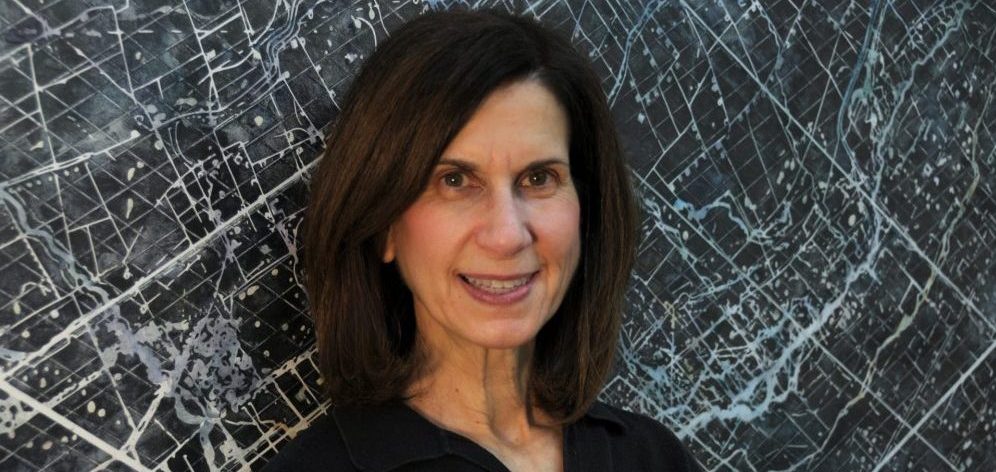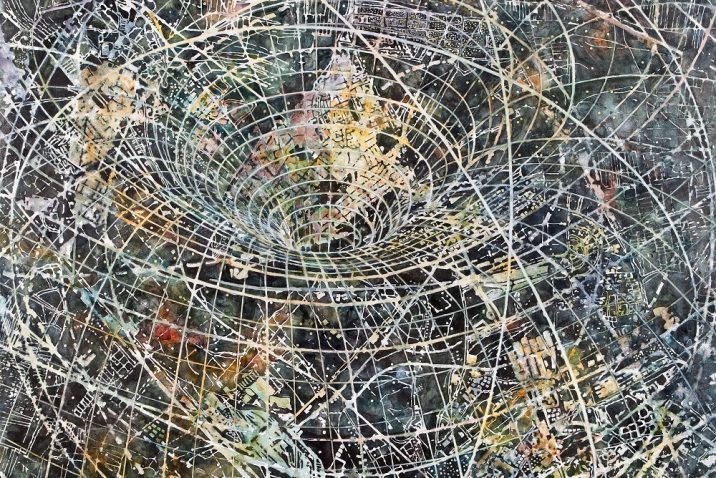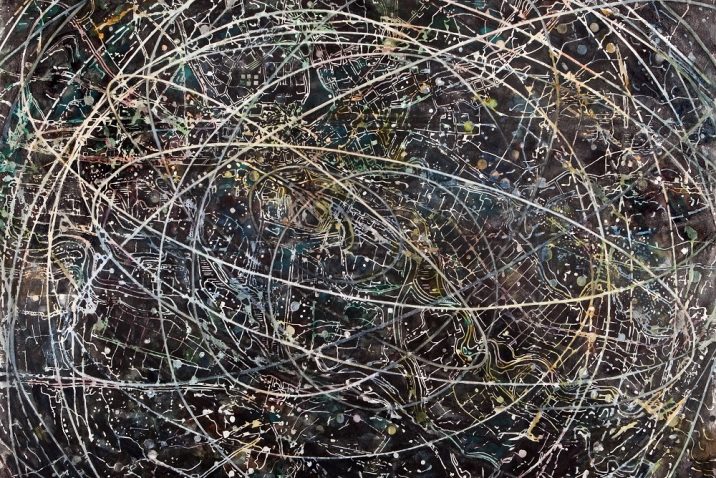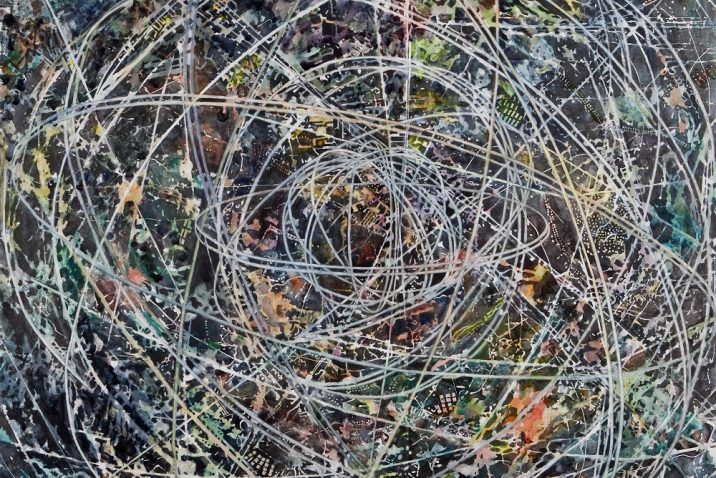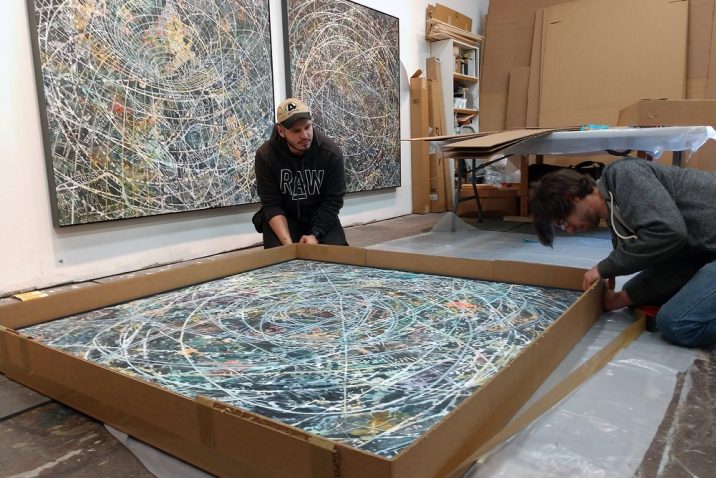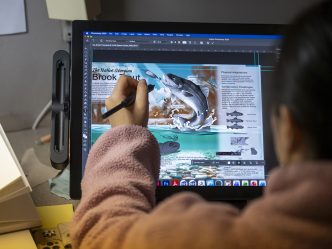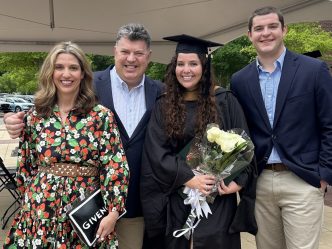The artwork of Cheryl Goldsleger, Augusta University’s Morris Eminent Scholar in Art, will be included in an exhibition organized by the European Cultural Centre during the 2019 Venice Biennale
A few years after finishing graduate school, Augusta University’s Morris Eminent Scholar Cheryl Goldsleger explored her first Venice Biennale, which is one of the most prestigious art exhibitions in the world held in Venice, Italy.
“The very first time I went, it was just so inspiring,” Goldsleger said. “The Venice Biennale was founded in 1895 and it is the exhibition of the art world. There are now numerous exhibitions in Venice that occur simultaneously with the Biennale due to its prominence. In fact, they attract more than 500,000 visitors each year.”
Since that first trip, Goldsleger has returned to Venice and the Biennale at least a dozen times to admire the work of artists invited to participate from all over the world.
But this year’s trip to the internationally renowned city will be unlike any other Goldsleger has ever experienced.
This year, she will see three of her own paintings hanging on the wall in Venice.
“I am beyond excited. I’m just elated,” Goldsleger said, smiling. “Of course, after going so many times over the years, you can’t help but think, ‘I’d love to do this.’ So, to have this happening, it’s a real dream. I feel very grateful and fortunate, and I’m thrilled to be representing Augusta University on this international stage.”
In November, Shannon Morris, the director of the Mary S. Byrd Gallery of Art at Augusta University, received an invitation from the European Cultural Centre to present artwork from the university for its exhibition called, “Personal Structures: Identities.”
The exhibition, which is sponsored by the Global Art Affairs Foundation and organized by the European Cultural Centre, is presented in context of the 2019 Venice Biennale and will be held in the Palazzo Bembo, Palazzo Mora and Giardini Marinaressa in the heart of Venice from May 11 through November 24. Goldsleger’s installation, “Vast Scale – Intimate Space” will be exhibited on the second-floor of Palazzo Bembo.
“I think the national and international publicity that we received last year from our gallery winning the 2018 Ellsworth Kelly Award presented by the Foundation for Contemporary Arts put us on a radar that we weren’t on before,” Morris said. “I also think the European Cultural Centre, or the ECC, looks for smaller institutions and universities with that level of credential so they can offer a wide variety of institutions and artists this opportunity to show during the Biennale.”
After receiving the invitation and details on the theme of the show, Morris said she immediately approached Goldsleger, asking her to participate in the exhibition.
“We chose Cheryl to be here as our Morris Eminent Scholar because she’s already noted for her work,” Morris said, adding that Goldsleger’s artwork has been featured in both national and international museums such as the Museum of Modern Art in New York, the High Museum of Art in Atlanta, The Fogg Museum at Harvard University, the Israel Museum, the New Orleans Museum of Art and the Tel Aviv Museum of Art. “Cheryl is a very modest person, but her work is really at the level of many of the artists who are going to be in the exhibition in Venice.”
Morris also felt that Goldsleger’s artwork was a perfect reflection of the exhibition’s theme on the concept of identities.
“It was sort of kismet because her work really does respond to personal structures and how we define ourselves as individuals and a culture,” Morris said. “And this exhibition brings Augusta University and Pamplin College as well as the art department into the international art scene because this is the largest biennale and the oldest biennale in the world.”
Identities and space
Goldsleger’s exhibition is entitled “Vast Scale – Intimate Space” and it will feature three large mixed-media paintings called, “Transient,” “Tenuous” and “Coalescence.” The paintings will be installed over a wallcovering created from a reverse printing of one of Goldsleger’s drawing entitled, “Independent,” which is owned by local collector Martha Anne Tudor. Morris said she hopes this presentation will reinforce how individuals identify within communal spaces.
As an artist, Goldsleger said she’s always been interested in the concept of space.
“The way a culture organizes their spaces tells a great deal about that society,” Goldsleger said, pointing to the structures built in Ancient Egypt or the famous Temple of Angkor Wat in Cambodia as examples. “Different cultures have different needs and do different things to organize their society. If you go to the Natural History Museum in New York, you’ll see bones or vases from different cultures and that tells you something, but it doesn’t really give you a sense of how the people of a culture interacted with one another. But their use of space really paints a picture.”
Even when she was a student at the Philadelphia College of Art, Goldsleger said it was clear that she viewed space differently than the other art students.
“If my teacher set up a model that we were supposed to draw, everybody there had a drawing where the model filled their page,” Goldsleger said. “Well, my model was always very small on the page and I drew the whole room. So, I realized over time that I am obviously more interested in the room and the space than I am the model.”
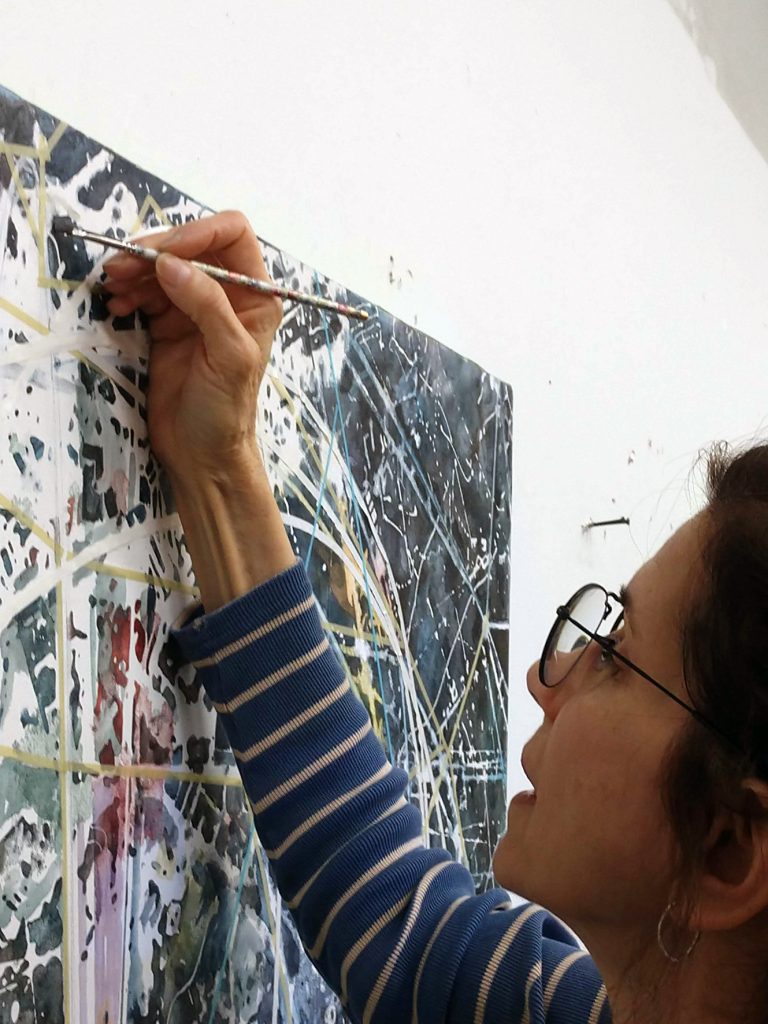
Goldsleger said she also likes to play with multiple vantage points in her artwork.
“We understand things in multiple ways,” she said. “What your eye can see perceptually is not what your mind knows conceptually. We put a lot of information together in our heads that makes us have a broader understanding of what we have taken in through our eyes or ears.”
For example, Goldsleger discovered early in her career that certain mundane objects can spark emotions in people because of their past experiences associated with that object.
“When I first started to exhibit my work, I had a lot of empty chairs in my paintings,” Goldsleger said. “The paintings were still about space, but I would do cutaway buildings and these big rooms and layers of rooms. But I populated the rooms with empty chairs. They were regular, straight-back chairs or folding chairs.”
Goldsleger said she was shocked by the public’s response to the empty chairs.
“People would come up to me and say, ‘That’s so uncomfortable.’ Empty chairs really bothered them,” Goldsleger said. “Different people had different reactions to an empty chair, which I didn’t know I was opening that sort of avenue by using empty chairs. But it was clear that different people see different things when looking at regular, everyday objects.”
More than a map
Eventually, Goldsleger got rid of the chairs and began concentrating more on an abstract view of space.
“I started doing imagery that looked more abstract but was based on floor plans and architectural plans,” she said. “Then, I started moving from interior floor plans to exterior mapping plans.”
A few years ago, Goldsleger even decided to take a course on Geographic Information System (GIS) mapping.
“I did not become proficient in the software at all,” Goldsleger said, laughing. “It was tougher than I thought, but I stuck it out and what I did learn was that maps tell stories. You can craft a map to tell a story by emphasizing things and de-emphasizing things. You can emphasize the topography of an area or you can highlight certain details or eliminate certain details. In the end, I was fascinated by how maps are distorted.”
Maps have a great deal of influence and power over people’s perception, she said.
“Suddenly, a spark went off and I was just amazed,” Goldsleger said. “Maps have this great potential and I had always looked at them as something just for directions.”
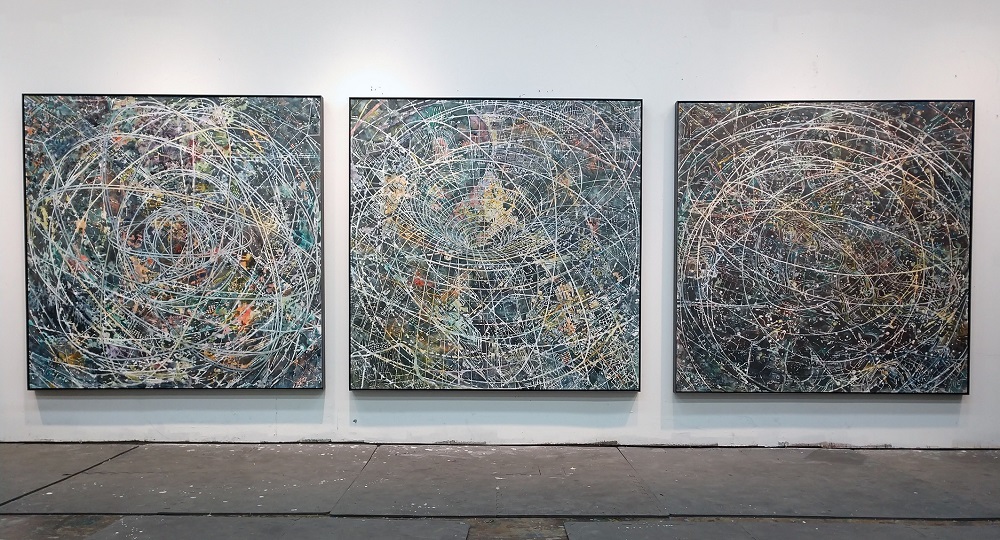
Goldsleger began combining geometric and diagrammatic imagery with the drafting skills of map makers to create real and imagined locations in her art.
“One of the things that I do in the studio while I’m working is, I listen to the radio. I usually put on the BBC and I listen to the world news,” Goldsleger said. “Almost every day I was listening to discussions on migration, so I started to look at maps from different parts of the world where I was hearing all of the news from areas like the Middle East and South America.”
Through her artwork, Goldsleger said she wanted to address the arbitrary nature of society’s boundaries.
“I think one of the things that fascinates me is how chaotic nature is. Yes, there are mountains and rivers, but in between those things, there’s a lot of chaos,” she said. “And then, we’ve overlaid cities and villages and towns with streets and roads to make this network of connections. But we’ve also made these arbitrary divisions between this town and that town and this country and that country. So, those are things that I think about in my work.”
Beyond boundaries
When Morris notified her of the invitation to the European Cultural Centre’s 2019 Art Biennale, Goldsleger immediately knew she was facing a short timeline.
As part of her process, Goldsleger stretches and primes linen, builds her own frame, makes her own paint and does extensive drawings of the artwork prior to even beginning her paintings.
“All of that takes weeks to do, so as time was ticking by, I thought, ‘I need to finish priming. I need to finish these sketches. I need to get down to putting paint on,’” Goldsleger said, laughing. “So, I just worked, worked and worked all the way up until the shippers came on March 22 to pick up the paintings.”
While the last several months have been a whirlwind of activity, Goldsleger said she is truly honored to be representing Augusta University in Venice. She, along with her husband and sculptor, Larry Millard, plan to arrive in Italy on May 7 prior to the exhibition’s preview parties on May 9 and 10.
“That will give me two days before the previews to make sure the work looks as good as it can because it’s very difficult with an international show to put all the details in someone else’s hands,” Goldsleger said. “But I must say, Shannon [Morris] has picked an incredible international team and I’ve been very pleased with everything they’ve done so far.”

Goldsleger is also thrilled that Morris, along with Mary Byrd, the namesake of the Mary S. Byrd Gallery of Art, will be traveling to Venice for the show as well.
“We really wanted Mary to go since the gallery was such a crucial part in the invitation to the show,” Goldsleger said. “She has agreed to come, so Shannon and Mary are flying together and will arrive on May 8, in time for the preview parties.”
To be included along with more than 150 artists from all over the world in the European Cultural Centre’s 2019 Art Biennale is a true privilege, Goldsleger said.
“These are really fine art exhibitions. What I mean by that is, these exhibitions in Venice are not commercial ventures,” she said. “These shows are about ideas and concepts and the art is considered of high quality, whether it’s sellable or not. It’s not about the dollar. So, to me, it is such an honor to be in that kind of show because it’s really all about the art.”
 Augusta University
Augusta University
